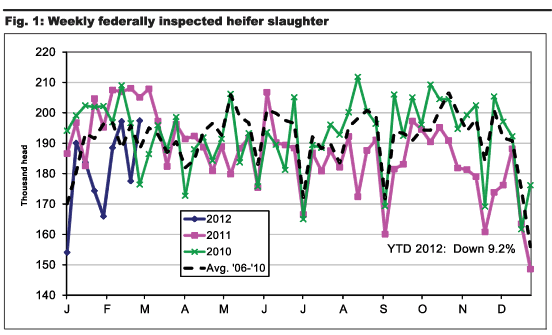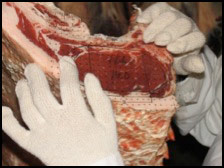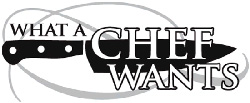MARKETING...

The Beef Cattle Slaughter Mix
Review reasons for changes in the beef cattle slaughter mix.
A handy and dependable source for information on livestock and meat markets is the "Current Situation and Analysis" section on the home page of the Livestock Marketing Information Center (LMIC) (www.lmic.info). The center is located in the Denver suburb of Lakewood and is a cooperative effort of 28 state extension services, six USDA agencies and 11 associate institutions, one of which is CME Group. LMIC provides a number of data and analysis services for its members, but does make some information available to the public on a regular basis. The weekly "Current Situation and Analysis" is one such information piece.Last week's "Current Situation and Analysis" section included a timely discussion of changes in the beef cattle slaughter mix. The main points were: Read more.
 Risk Management for Cow-calf Owners and Stockers
Risk Management for Cow-calf Owners and Stockers
Risk management and marketing tips for a volatile year.
With no calf futures market, how do you manage risk and limit exposure as a cow-calf operator? Mike Murphy and Troy Applehans of CattleFax addressed this question at the 19th Annual Cattlemen's College hosted in conjunction with the 2012 Cattle Industry Convention and NCBA Trade Show in Nashville, Tenn., Feb 1.Has the recipe for profit changed, Applehans asked the audience. It still requires managing fixed costs, marketing, seasonality, developing a plan and discipline.
Applehans suggested developing marketing strategies with a "whole operation" view; analyze costs on breakeven (dollar per hundredweight) basis and run the numbers; know the long-term, annual and short-term seasonal trends and use seasonal marketing; and stay plugged in with your CattleFax analysts to monitor trends, basis and price expectations. Read more.
CAB Mythbusters
What they thought they knew that just ain't true.
I'm one of those people who believe in the intrinsic good of mankind. I'd like to think that everybody embodies the characteristics of honesty and trustworthiness. I think many folks on our staff tend to lean in that direction, too. In fact, our entire program is built on integrity.
But luckily we've got more than a few realists on our payroll who know sometimes people — even the good-intentioned, who want to be 100% true and honest — make mistakes. They also know that there are some people in this world who will cheat if they think it will get them ahead.
Today's myth is devoted to those colleagues of mine who protect this brand, maintaining its value, all the way back to you cattlemen and women. Read more.
Just the Right Twist
Chef Anthony Vidal of Hash-House-A-Go-Go explains why the popular restaurant uses CAB.
 "Farm food" and beef seem like a natural pair, but at the popular Hash-House-A-Go-Go, it wasn't always that way.
"Farm food" and beef seem like a natural pair, but at the popular Hash-House-A-Go-Go, it wasn't always that way.
The five-restaurant chain serves "twisted farm food," or food your mama used to make, but not the way mama made it. Want proof? The meatloaf is stuffed with red peppers, fresh spinach and mozzarella cheese. The chicken pot pie is served upside down, bursting out of its shell. Pancakes come in flavors like mango coconut, butterscotch almond and Snickers®.
"We have a big breakfast reputation, and sometimes that overwhelms the lunch and dinner menus," says Chef Anthony Vidal, who was recruited to help open the first Las Vegas location. "You will not see many restaurants known for breakfast serving the type of menu and quality that we do for lunch and dinner, so it takes a little something more. We added the Certified Angus Beef® (CAB®) 18-oz. ribeye, the beef tenderloin and the corned beef, and now we are known for our burgers and steaks, too." Read more.
The Source
The AngusSource Carcass Challenge results revealed.
Every day, cattle are purchased through a sale barn, on a video sale or by private treaty. Many are purchased on how they look, what they weigh and the color of their hide. AngusSource, a USDA Process-Verified Program, was introduced in 2005 so producers could provide third-party documentation that their calves were sired by registered Angus bulls and had a known age and source. Producers want to raise a quality calf that grades on the rail and gains efficiently. The vision of providing carcass data to producers was formulated in the AngusSource Carcass Challenge contest, and the results were more than we could have imagined. Read more.
Cattle Outlook
Beef imports exceeded exports during January for the first month since August 2010. Beef exports during January were the lowest of any month since April 2010. January exports were down 8 million pounds (lb.) (4.4%) compared to a year ago, largely because Hong Kong purchased 7 million lb. less U.S. beef than in January 2011. January beef imports were up 43 million lb. (28.8%) compared to a year ago and the highest since June 2011.
In total, 8.6% of January beef production was exported. Beef imports equaled 9.0% of January production.
January domestic retail beef demand was up 8.1% compared to a year earlier; but export demand for U.S. beef was down 1.9%. Packer demand in January for fed cattle was up 3.8% compared to January 2011. Read more.
New Study Explores Innovation, Opportunities
for Diverse Local Food Distributors
Agriculture Deputy Secretary Kathleen Merrigan released a report March 16 on the distribution practices of eight producer networks and their partners distributing locally or regionally grown food to retail and foodservice customers. The report, entitled "Moving Food Along the Value Chain: Innovations in Regional Food Distribution," shows how these networks tap into the growing commercial demand for local and regional food products while creating additional economic opportunities and expanding healthy food access.
The study details how these organizations help local and regional producers overcome bottlenecks in the food marketing system through collaborative and transparent planning and adherence to a shared set of operating principles. By sharing lessons learned and best practices, the new study serves as a resource for producers, food processors and marketers organizing to supply local and regional food products to commercial customers. Read more.
Angus Calendar
To view the Angus Calendar, a complete list of Angus sales, click here.











